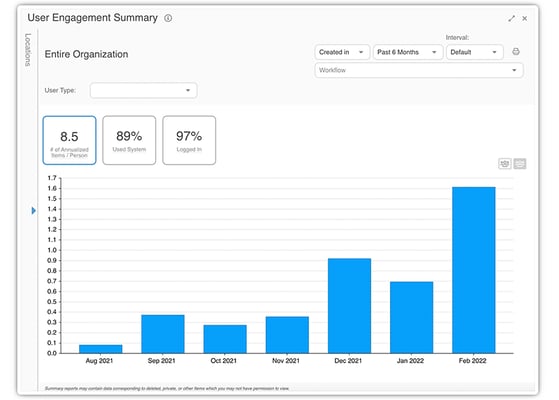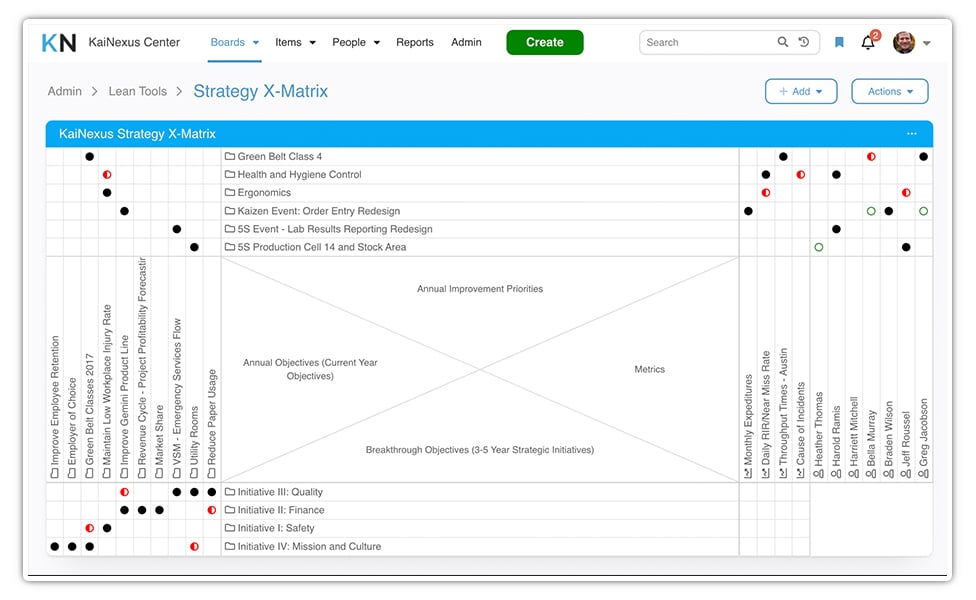 Moving an organization toward its long-term strategic objectives while maintaining and improving day-to-day operations requires thoughtful planning and attention to organizational alignment. It is essential that the strategy be an integral part of daily work and thinking from the top of the organization to the bottom. Because strategy execution is central to operational excellence, fundamental principles and techniques have evolved that reflect the practices of the most successful organizations.
Moving an organization toward its long-term strategic objectives while maintaining and improving day-to-day operations requires thoughtful planning and attention to organizational alignment. It is essential that the strategy be an integral part of daily work and thinking from the top of the organization to the bottom. Because strategy execution is central to operational excellence, fundamental principles and techniques have evolved that reflect the practices of the most successful organizations.
What is Policy Deployment?
Policy deployment is sometimes called strategy deployment or Hoshin Kanri by those that practice the Lean business methodology. It is a technique designed to ensure that strategic goals and objectives drive all of the major activities in the organization. The purpose of policy deployment is to make sure that every person in the organization is actively progressing toward the same goals. Sometimes leaders call the future desired state "True North."
Policy deployment is a strategic planning process that aims to set the corporate objectives, management plans, and daily operations in sync with each other. It creates a feedback loop with short-term goals and progress indicators being well communicated up and down the chain of command.
Example Signs That Policy Deployment is Urgently Needed
Every organization can benefit from policy deployment and strategic planning, but a few symptoms indicate the need is urgent or that previous attempts at strategy deployment haven't worked. They include:
|
If any of this sounds familiar, policy deployment can help right the ship.
The 4 Phases of Policy Deployment
Phase 1 – Draft the Strategic Plan
Policy deployment starts with the strategic plan. The plan includes several critical long-range "breakthrough" goals for the organization. Many organizations focus on game-changing objectives that can be achieved within three to five years. However, the strategy also includes annual goals that must be completed in the current or next year to prepare the path to long-term success.
Phase 2 - Develop Tactics
The strategic plan should include the most crucial policy objectives of the organization. It is the role of mid-level managers in each department to decide which tactics will be used to achieve the objectives included in the plan. The Lean technique of "catchball" is helpful at this stage as ideas are moved up and down the hierarchy for feedback, refinement, and improvement.
It is essential to keep in mind that the tactics in the plan aren't static. They may need adjustment as new information is available or marketplace conditions change. That's why it is important to have monthly progress reviews, allowing leaders to access results and adjust plans if needed.
Phase 3 – Empower Action
Once the strategy and tactics are in place, team leaders and supervisors consider the operational details and process changes needed to reach the stated goals. Next, coaches work with employees to develop individual goals that align with the department's strategic objectives.
Phase 4 - React and Respond
After work toward the strategic objectives has started, leaders must stay abreast of the actual progress in order to make adjustments when needed. New opportunities or challenges may appear that require different goals or revised tactics. Policy deployment is not a one-time event. It is an ongoing endeavor that requires time and attention. It's an ongoing process that's refined in the spirit of Plan-Do-Study-Adjust (PDSA) thinking.
Keys to Success
There are a few simple things leaders can do to ensure that policy deployment will be successful.
#1 - Maintain Focus
The strategy isn't just a list of random goals. Instead, it should focus on three to five objectives that will represent meaningful change and success for the organization. Picking the most important objectives will help your team focus their limited energy on what matters most. As your team's policy deployment skills mature, you may consider adding more goals, but starting with a limited number of goals and reasonable expectations is wise. Another aspect of focus is ensuring you don't have too many high-priorities intended to reach the high-importance goals.
#2 - Set Incremental vs. Disruptive Objectives
Goals can be incremental and evolutionary, achieved through a series of minor but continuous improvements, or they can be disruptive, dramatic, and revolutionary. Both types of objectives are valid forms of improvement to include in policy deployment. However, it's essential to keep in mind that for both types of change, leaders must carefully document the steps and the results. For incremental improvement, in particular, it can be challenging to understand the long-term impact of the work without intentional, thorough documentation.
#3 - Seek Broad Input
Leadership's undisputed responsibility is to develop and communicate the strategic plan. However, you are more likely to get the engagement and performance you want if you take the time to reach a consensus on the strategic plan with mid-level managers. By seeking broad input, you may get helpful information and additional points of view that improve the plan. Additionally, making folks part of the planning process is an excellent way to foster a feeling of accountability and ownership.
Policy Deployment Software
Successful policy deployment depends on structure and communication. Keeping the strategic objectives front and center while managing daily operations is a tough challenge for any leader. Organizations have used email, spreadsheets, file servers, and even physical kanban boards to manage the strategy. Unfortunately, these passive systems usually fail to support sustained progress toward the goals.
Today, organizations have the option to utilize software tools designed for the specific purpose of supporting policy deployment. Here are the most significant benefits.
Real-time Performance Insight
Implementing a policy deployment platform gives leaders a quick view of the organization's progress toward its strategic goals. Armed with this information, leaders can take action when roadblocks or bottlenecks occur.
Aligned Objectives
Every employee must understand how they fit into the larger picture. Policy deployment software makes it easy to communicate and document how the goals of each individual connect to an annual or strategic objective. In addition, organizational alignment encourages employee engagement and emotional investment.
Better Decision Making and Resource Prioritization
When everyone has access to the same information and all projects are documented, it is easy to make decisions and decide how resources should be prioritized. This reduces the need for conflict and ensures everyone is rowing in the same direction.
When evaluating policy deployment software, consider the following key features.
Workflow Alerts and Notifications: Deploying a platform that alerts team members when they have activities assigned to them and notifies managers as work-in-progress moves forward helps keep strategic work at the front of mind.
Visual Management and Configurable Dashboards: The best policy deployment software includes configurable dashboards, control charts, kanban boards, and other ways to visualize how the strategy aligns with daily activities.
Impact Analysis: Policy deployment software helps assess the impact of each project in financial and other terms. Impact analysis allows leaders to prioritize effort and resources.
Engagement Reports: Leaders also need to know which employees and teams contribute most to reaching the strategic objectives. Again, policy deployment software with advanced reports helps leaders maintain direction control.

The X-Matrix for Visualizing Policy Deployment
One of the most broadly used strategic management tools is the X-matrix. An X-Matrix is a graphic comprising five sections that visualize the strategic plan. The design of the matrix helps map the relationships between each element. Look for support for the X-matrix when selecting policy deployment software.
The sections are:
Breakthrough Objectives (Bottom Quadrant)
The bottom section represents the basis of the strategy. It includes the essential strategic goals expected to be achieved in three to five years.
Annual Objectives (Left Quadrant)
Annual objectives are the goals that are necessary to achieve the strategic objectives. The X-matrix lets users connect each yearly plan with the strategic objective that it supports.
Annual Improvement Opportunities and Priorities (Top Quadrant)
The top section houses the known opportunities for improvement. Each opportunity is connected to an annual objective.
Metrics to Measure (Right Quadrant)
On the right, you'll find the key performance indicators that will measure success toward the annual goals.
Teams and Ownership (Far Right Side)
Ownership and accountability are essential elements of policy deployment. The far-right section of the X-matrix contains the owner assigned to each metric, improvement opportunity, and annual objective.
Policy deployment in today's complex, ever-evolving landscape is a challenging task. But when leaders invest the effort to develop an aligned and thoughtful approach to the strategy supported by technology, they increase the odds of reaching True North.


Add a Comment